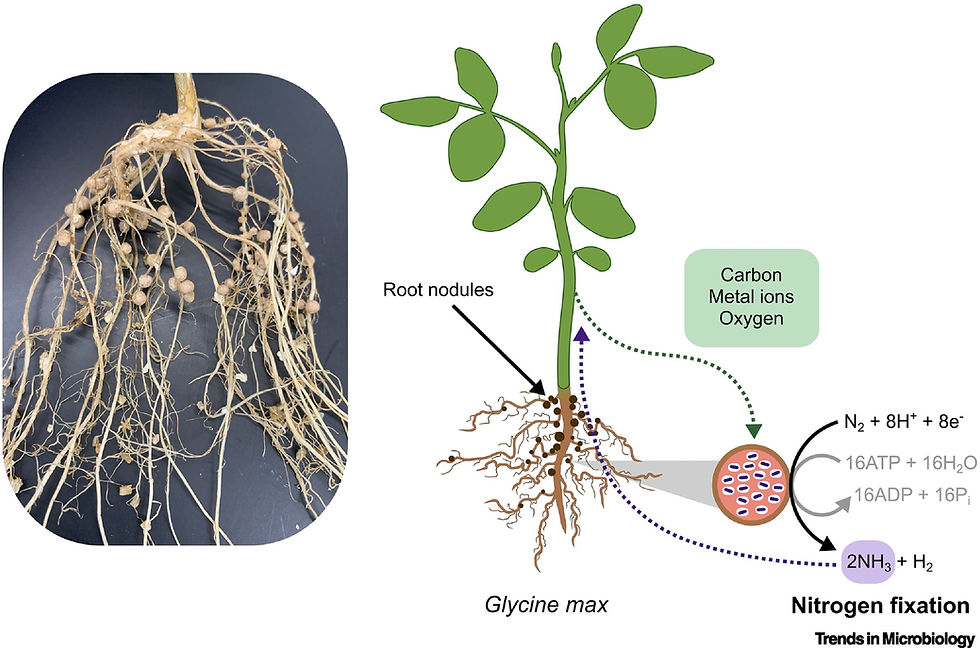What is in a plant’s diet? (4/4): The basics of nutrient management
- Miguel M.LS.

- Apr 27, 2021
- 2 min read
Updated: Dec 13, 2021
In past articles of this series we have covered with certain detail the thirteen micro and macronutrients that all plants need to survive and grow, as well as some traditional (inorganic and organic) methods of adding nutrition to the soil. The only question that remains for now is: how can the availability of these nutrients be assured? That is, how can growers ensure that, should they be unable to fertilize their fields for one growing season (let’s say), the land will not become a barren, inhospitable, infertile space?
The answer to this lies in taking notice of other factors behind the measurable presence of nutrients in the soil. If a landscape is always in need of repeated fertilization to remain productive it is already in a very precarious state, in which most of the fertilizers are probably consumed during a growing season and the soil is, otherwise, inhospitable if not intensively managed. The only way to responsibly address this is to start building the soil, and here we will focus especially in two aspects of this: soil pH, and water content.
All of the nutrients that we have talked about becoming more or less available according to the acidity or alkalinity of a soil. Soils that are more acidic have less availability of calcium (Ca) and magnesium (Mg), because these chemical compounds become less mobile and plants have more difficulty absorbing them. At the same time, iron (Fe), manganese (Mn), and zinc (Zn) become far more mobile and available to plants, while phosphorus (P) becomes more available at first and later is almost completely immobilized. An increase in alkalinity (that is, an increase in pH levels) reverses these processes. This is why the pH of the soil is a critical condition to be balanced and preferably adjusted to the requirements of most crops (6.0 to 7.0, but it may vary depending on the species). Here's a full pH scale, so we can contextualize that:

And here's a table depicting the availability of most nutrients and micronutrients according to soil pH, courtesy of Wikimedia Commons:

The water content of the soil is another major component, simply because it makes every chemical substance within the soil more soluble. Even though plants use water for other purposes as well beyond nutrient absorption, if we focus only on soil fertility it is, by itself, evident that constant presence of ideal water levels is essential for plants to actually be able to access the nutrients present in the soil. Same as with pH levels, the thirteen micronutrients and macronutrients may all be present in perfect amounts, but these two conditions deeply affect whether these nutrients are in a state that is actually useful for plants and, consequently, their keepers. Water content is measured in the percentage of water out of the total weight of a sample of soil, with results that may look like these excellent diagrams from the North Carolina Extension Gardener Handbook:


Improving these two conditions passes as well through managing other chemical, physical and biological conditions of the soil, so keep an eye in our blog for future articles on those subjects. In the meantime, happy growing!



Comments